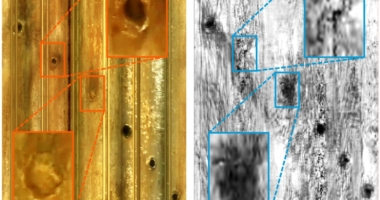A new discipline called geriatronics has emerged in Germany, which combines advanced technologies such as robotics, IT, and 3D technology for geriatrics, gerontology, and nursing. Garmi is a robot built by a team of scientists at the Munich Institute of Robotics and Machine Intelligence with the help of medical practitioners. It can perform diagnostics on patients, provide care and treatment for them, and revolutionize elder care. However, trust and acceptance are major challenges in deploying this technology, as patients need to trust and accept the robot as part of their care. The robot is still in the developmental stage, and there is no clear timeline for its commercial use. Nevertheless, the statistics show that it is urgent to integrate this kind of technology in society, as Europe’s most populous country is rapidly aging, and there is an estimated 670,000 carer posts set to go unfilled in Germany by 2050.
Robots for Elder Care: Germany’s Solution to Lacking Health Workers
A new discipline called geriatronics, which combines advanced technologies such as robotics, IT, and 3D technology for geriatrics, gerontology, and nursing, has emerged in Germany. The white-colored humanoid “Garmi” is a robot built by about a dozen scientists with the help of medical practitioners like retired German doctor Guenter Steinebach, 78. It stands on a platform with wheels and is equipped with a black screen with two blue circles acting as eyes attached.
Garmi has the ability to perform diagnostics on patients, provide care, and treatment for them, making it a dream for Dr. Steinebach. The Munich Institute of Robotics and Machine Intelligence, based at the Technical University of Munich, developed this unit specializing in geriatronics in Garmisch-Partenkirchen, a ski resort with one of the highest proportions of elderly people in Germany.
Europe’s most populous country is aging rapidly, and with an estimated 670,000 carer posts set to go unfilled in Germany by 2050, researchers are working on developing robots that can take over some of the tasks carried out today by nurses, carers, and doctors.
The lead scientist of the lab, Abdeldjallil Naceri, said, “We have ATMs where we can get cash today. We can imagine that one day, based on the same model, people can come to get their medical examination in a kind of technology hub.” He added that doctors could then evaluate the results of the robot’s diagnostics from a distance, which could be particularly valuable for people living in remote communities.
Alternatively, the robot could offer a more personalized service at home or in a care home — by serving meals, opening a bottle of water, calling for help in case of a fall, or organizing a video call with family and friends.
Dr. Steinebach tested Garmi’s progress in the Garmisch laboratory, sitting at a table equipped with three screens and a joystick. At the other end of the room, a researcher designated as a test model took his spot in front of Garmi, who placed a stethoscope on his chest, an action directed by Steinebach from afar via the joystick. Medical data immediately appeared on the doctor’s screen.
In conclusion, the development of geriatronics is a solution to Germany’s shortage of health workers. The use of robots such as Garmi could revolutionize elder care and offer better health services to people living in remote communities.
Trust and Acceptance: A Major Challenge in Deploying Robots for Elder Care
Retired doctor Guenter Steinebach, while moving the joystick, said, “Imagine if I had had that in my old practice,” referring to the Garmi robot. The robot has been developed by a team of scientists at the Munich Institute of Robotics and Machine Intelligence with the help of medical practitioners like Steinebach. Garmi has been built to perform diagnostics on patients, provide care, and treatment for them, and it is part of a new sector called geriatronics, which combines advanced technologies such as robotics, IT, and 3D technology for geriatrics, gerontology, and nursing.
Naceri, the lead scientist of the lab, said that Garmi is like a three-year-old child and that they have to teach it everything. Despite this, Naceri believes that they must get there, and from 2030, they must be able to integrate this kind of technology in society, as the statistics show that it is urgent.
The Sankt Vinzenz retirement home in Garmisch, a partner of the project, is likely to see Garmi whizzing down the corridors if it is deployed one day. Eva Pioskowik, the director of the home, believes that the robot could allow staff to spend more time with residents. However, one of the major challenges for Naceri’s team is the patients’ acceptance and trust of the robot. Naceri believes that patients need to trust the robot and be able to use it like a smartphone.
In conclusion, while the development of robots like Garmi has the potential to revolutionize elder care, trust and acceptance are major challenges in deploying this technology. Patients need to trust the robot and accept it as part of their care, like using a smartphone.
Don’t miss interesting posts on Famousbio








